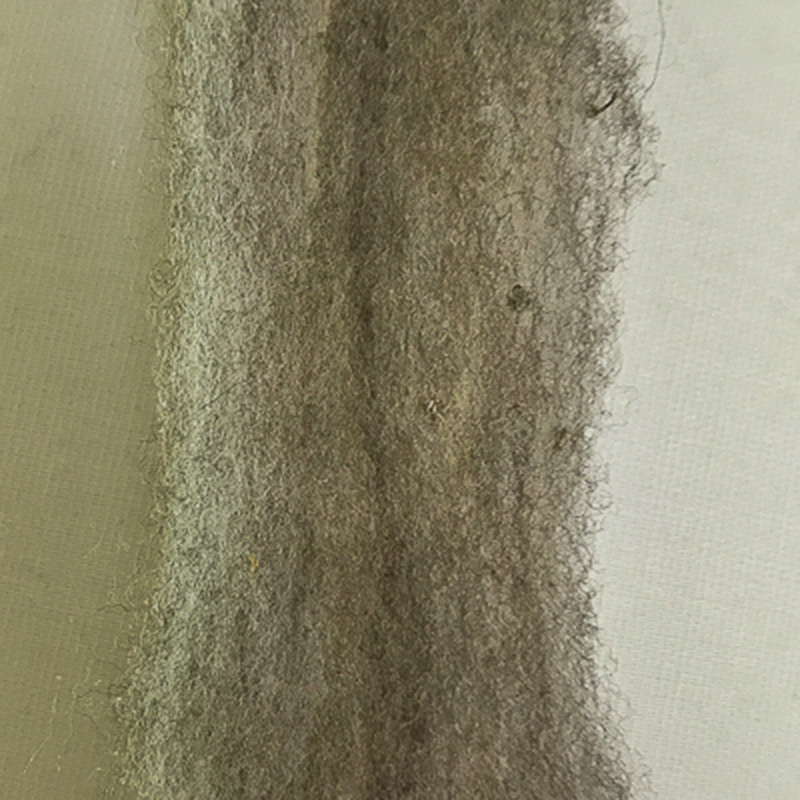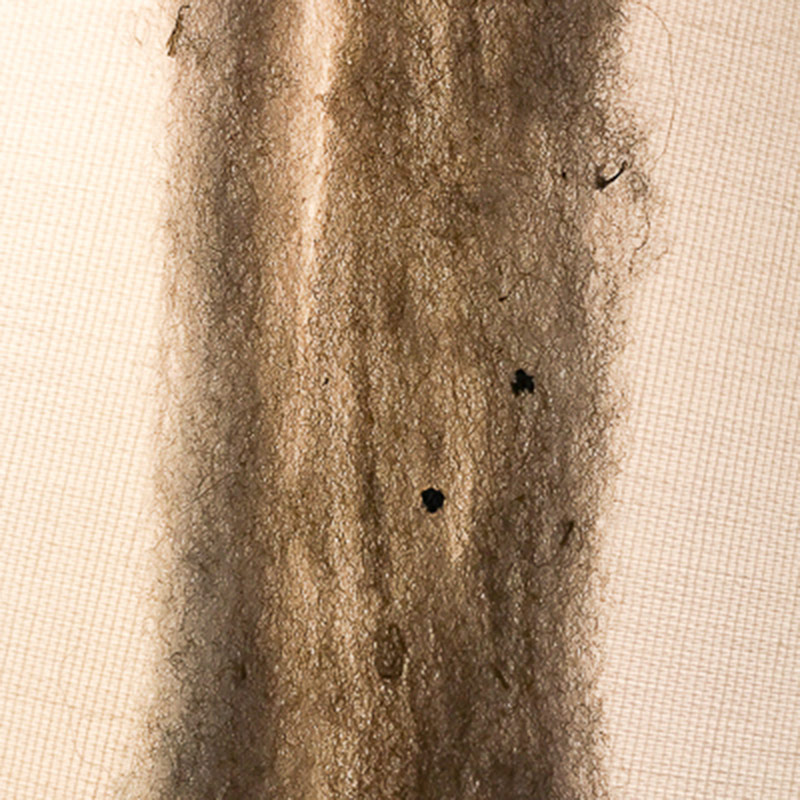Most spinners have easy access to roving and combed top preparations, but did you know that there is a step in between? Pin-drafted roving is one of my favorite preparations because it’s a balance between the bouncy, lively feel of roving and the smooth consistency of combed top. During my spring fiber travels around the country, I saw more of this wonderful stuff available than in the past, but many spinners still wonder what pin-drafted roving is and what to look for when shopping.
Coils of pin-drafted roving are as appealing as candy. Photo by George Boe
What is pin-drafted roving?
In some mills, this intermediate step is used to condense carded fibers in preparation for combing. After the fiber has been carded into roving, several rovings can be fed into a pin-drafter. During the process, individual fibers are attenuated and pulled into closer alignment by a series of pins, becoming a compact and consistent single roving that looks a lot like combed top. What makes this process different from coming is that very little of the vegetable matter (VM) and short fibers are removed.
Several rovings go in the back of the pin-drafting machine and come out the front as a single, more organized roving. Pin-drafter at Zeilinger Wool Co. in Frankenmuth, Michigan. Learn more at zwool.com. Photos by Kate Larson
What makes a great pin-drafted roving? Three-Step Roving Check:
1. Does the roving have neps, noils, or VM? I like to hold a roving up to the light to easily see thick spots of tangled wool or bits of hay and debris. How much VM is too much? This is totally up to you, but it’s good to scope this out before purchasing.
Roving in a ball will look very different than when held up to a light. Photos by Kate Larson
2. How long is the staple?
Pull out a few fibers from the end of the roving to check the staple, the length of the individual fibers. Fibers 3" or more are easy to spin with a worsted draw. Very short fibers are typically spun with a woolen draw.
3. Does it feel clean?
Holding the roving in your hand, does it feel sticky or clean? During processing, a carding oil is often added to the fiber to lubricate and protect the fibers. Sometimes this can leave rovings with a sticky residue, making the fibers more difficult to draft. A sticky residue can also mean that the washed fiber still contained some of the natural wool grease. Among spinners, we have different tolerances for sticky roving. This doesn’t have to be a deal-breaker―roving can be rewashed. (See Chapter 3 of The Practical Spinner’s Guide: Wool for more info.)
For an overview of fiber preparations, see “What Are Roving, Top, and Sliver?” by Abby Franquemont.
—Kate
Featured Image: From top: Corriedale combed top; Shetland/Mohair pin-drafted roving; Shetland roving.






